MSI Z77 MPower Review: The XPower’s Little Brother
by Ian Cutress on January 26, 2013 10:30 AM EST- Posted in
- Motherboards
- MSI
- Z77
- Overclocking
MSI Z77 MPower Software
It is hard to pinpoint the perfect software to complement a motherboard. In a normal environment the software should look nice and work flawlessly, but in an ideal environment it could be tricky to decide what functionality should be there, and what form it would take. Over the past year MSI have used the MSI Control Center as their main detailed interface, and is now combined with MSI Suite as an attempt to roll all the individual programs into one interface access. For the most part, this works quite well.
Everything starts with the Driver CD interface, which MSI has not updated since I started reviewing their motherboards (see an older P67 review). The drivers and utilities are in two separate menus, each with separate buttons for different sections, or a ‘Total Installer’ button. Clicking this gives a check box list of everything available to install, and the user can deselect options they do not want.
The system will then silently install everything selected and reboot the system accordingly. The only things missing from this endeavor are descriptions of what each bit of software is – for example in the picture above, ‘OTPService’ is clearly not a descriptive term.
However after installing the drivers and software, we are good to go. The first thing we notice on reboot is MSI Suite, which greets us with an annoying error – if you did not install Trend Micro SafeSync as part of the package, it suggests that you install it every single time the system reboots. This is quite frankly annoying and somewhat abusive.
MSI Suite
The MSI Suite interface starts as a button on the top of your desktop, which when clicked gives you the menu below. It caters for the majority of the MSI Software (not the latest additions), which from left to right are: SuperCharger, ClickBIOS, Control Center, Audio Genie, Video Genie, Teaming Genie, Live Update and EasyViewer.
The options menu for MSI Suite allows for other utilities to be added as well. Aside from the aforementioned issue regarding Trend Micro SafeSync, MSI Suite looks good and offers quick interaction with the MSI tools.
MSI SuperCharger
MSI, like most motherboard manufacturers, implement a form of fast charging. In the case of MSI it comes via a specific USB 2.0 header on board, allowing up to 1.5 A current draw depending on the device, as well as charging under S5 (off). MSI advertises this feature for iPads, iPhones and ‘mobile’ devices; however it would seem to be dependent on whether your device supports the BC1.1 charging standard, and the device may not feel the full 1.5A.
MSI ClickBIOS II
As mentioned in the BIOS section of the review, depending on what version of the BIOS you are using, the latest version of ClickBIOS II will warn you every time if you do not have Intel ME8 flashed onto the system.
Every mainstream motherboard manufacturer is delving into the abilities to change the BIOS settings on the fly in the operating system. In an effort to bring continuity to the table, MSI’s utility is called ClickBIOS II and is designed to look like the BIOS itself, with a few minor changes. Firstly the fonts are slightly different, given that in the OS there is more scope for definition, but also the layout of the options has been adjusted slightly to give a ‘Help Info’ box, something desperately lacking in the main BIOS. In ClickBIOS II, we can go through the majority of the options found in the BIOS, however some adjustments will require a reboot to take effect.
MSI Control Center
The hub of the action in software comes from MSI’s Control Center, giving us info, overclocking options, power options, recording facilities, fan controls and mobile interfaces. Despite the official lack of ‘Big Bang’ in the motherboard name, we are greeted with a yellow and black skin which is actually pleasing on the eyes. The first page, entitled ‘Overclocking’, gives the information for the motherboard, the CPU, the memory, and voltage options.
Moving into the sub-menus supplies more information, with the ‘Advanced’ option allowing users to decide on CPU ratios per core. As shown in the advanced menu under ‘Core Ratio Limits’, the Z77 MPower uses a form of MultiCore Enhancement/Acceleration/Turbo to give the top turbo multiplier no matter the how much the CPU is pushed.
The OC Genie menu gives a one button click for the OC Genie options defined in the BIOS. At default settings this gives 4.2 GHz on the CPU and XMP ‘minus one strap’ on the memory (e.g. for 2400 memory, it gives 2133) and requires a reboot.
The OS fan controls are in the Green Power menu, and allows for each of the five fan headers a simple two-point gradient to be adjusted. Having this sort of visual functionality in the software is great, however MSI fall into a big trap. The software allows the user to adjust power to the fan, rather than the fan RPM – this is important power-to-RPM graphs for fans are not completely linear. Take for example the fan I used for this review, which follows the following profile:
Below 20% power applied, the fan spins at ~800 RPM, which is not taken into account in the MSI fan software. At 100%, the fan spins at ~2200 RPM, and at 50% this is 1300 RPM, not 1100 RPM as would be predicted with a directly linear power-to-RPM profile. When software developers start realizing this (some already have done), then we are on the road to proper sets of fan controls.
Another feature in the Control Center software is to turn off the blue CPU Phase LEDs on board. During normal operation they do flicker a lot, can be bright, and might upset a certain case/system build based around a color other than blue. If I had to leave a system like this on overnight for processing in the room that I slept in (such as a student or in a studio flat), I would probably be annoyed at the constant flickering of these LEDs.
The recording software is something I have liked about MSI and some other vendors as it gives options of what to follow, over what time, the ability to give system alerts when it goes over a certain value, and each graph line has its own normalized height function. Another positive feature is that the software does not affect DPC Latency, compared to some of the other implementations seen on the motherboard market.
MSI Mobile Control
The last piece of the Control Center software is in Mobile Control, which allows a user to access overclocking controls, fan/temperature sensors, and a remote control through their smartphone. The app is available on both iOS and Android, and it attempts to connect to a Control Center server which initializes on your system when enabled in the software. The app looks for a response on a specific IP (the server icon on the taskbar, when clicked, will tell you the IPs it listens to) and will connect via that. I unfortunately could not get it to work, either via my convoluted ICS setup or when the MSI Z77 MPower was connected to my main DHCP router via the WiFi.
MSI Audio Genie
The Audio Genie software is designed to give the user a different interface for the Creative THX TruStudio PRO software, and help optimize the on board audio setup. Alternatively the native THX TruStudio Pro software is still available for download from the MSI website, where MSI no longer advertise Audio Genie as a specific feature of their motherboards.
MSI Video Genie
Another MSI software element that is no longer advertised on the main website is Video Genie. The software manual states that this software ‘provides the automatic color saturation enhancement, contrast enhancement and intelligent gamma correction – Video Genie not only improves the quality of static images, the video playback will be dramatically enhanced’. As a bit of software, it runs panel agnostic and attempts to adjust the OS controls to optimize low brightness areas for videos and games. Ultimately usage and preference may vary, but the software is a simple on/off switch.

MSI Teaming Genie
Using two network ports together in a single system to increase bandwidth between clients has been part of the Ethernet specification for a long while now, and requires a form of software activation to enable it, as well as an applicable router/switch/DHCP client that can handle the settings. MSI have for a long time included Teaming Genie as part of their package, and allows users to select multiple Ethernet connections to work as one, even if the motherboard (like the MSI Z77 MPower) only has one Ethernet port on board. In order to take advantage of Teaming Genie, users will have to add in their own network interface cards.

Live Update 5
One of the jewels in the crown of the MSI software setup is Live Update 5, currently unrivalled by any motherboard manufacturer. What we have is an automatic update system for all the drivers, software, and even the BIOS for the motherboard. On installing, it asks if you would like to update to the latest version of LU5, and then it checks regularly with MSI’s servers to see if anything new is there for you.
Previous versions were a little annoying, whereby the software would not tell you the size of the update, meaning that those 150 MB of audio drivers were just labeled as ‘audio drivers’ and there was no suggestion as to how long the download and install would take place. MSI have gone someway to remedy this by informing the user how big the file is while it is being downloaded. All we need now is that information actually present in the table above, and all is well. By being on the wave of the latest MSI has to offer, users should stay ahead of any feature changes by the various software and drivers, which is not always applicable on other motherboards where it is standard to merely install the CD drivers and leave it at that unless an error crops up.
MSI Easy Viewer
Have you ever thought to yourself that the standard Windows image viewer application needed an update? Me neither, but MSI is under the impression it needs a touch up in the form of MSI Easy Viewer. The software lets the user do simple rotation and lighting tasks, as well as view the image full screen or swipe through the images in the same folder. Personally I actually use FastStone Image Viewer as my quick image viewer and editing app, as well as a benchmark in our testing suite.
Network Genie
When a vendor purchases Realtek components, there are various software packages that they also have the option to gain the license to. MSI takes them up on this offer, especially with regards the network ports, and we get an MSI skinned version of Realtek’s Network Genie. This is similar to cFosSpeed that we see on ASRock boards or Network Control on ASUS in that the user can select different modes to give various applications priority on network bandwidth.
This means that gamers can place the VOIP software and game at a higher priority than their email client or messaging applications. Unlike the other tools mentioned, we do not get a bandwidth limiter (for people on fixed usage plans) or a graphical interface to see usage over time.
MSI Fast Boot
If a user feels uncomfortable going into the BIOS to change the fast boot options, or the motherboard is in a case and users cannot access the Go2BIOS button, MSI have provided a software interface for both. It doesn’t get much simpler than this.
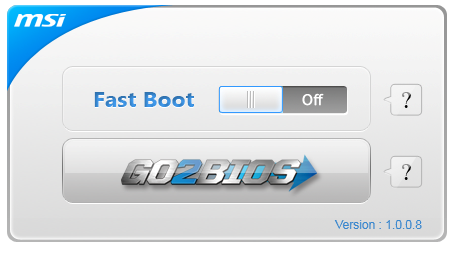


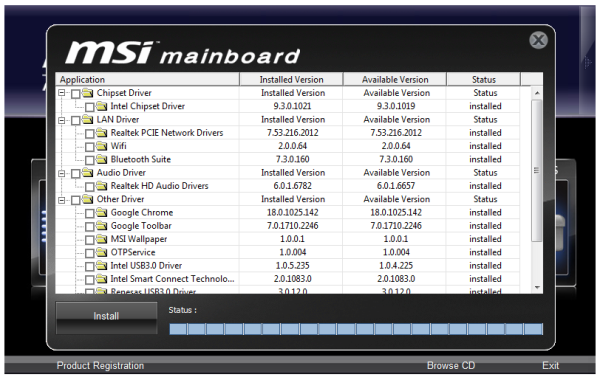

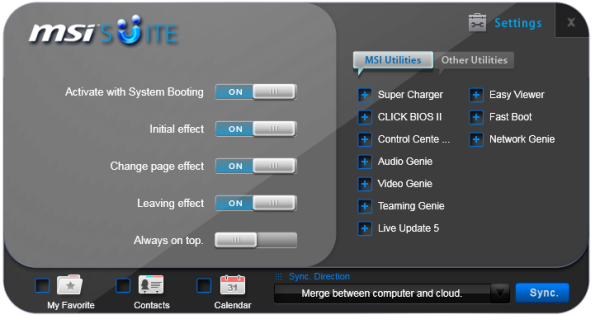
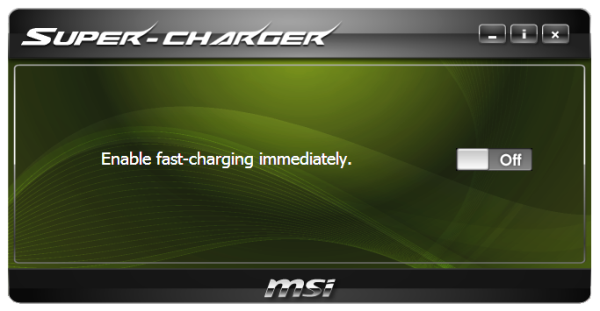
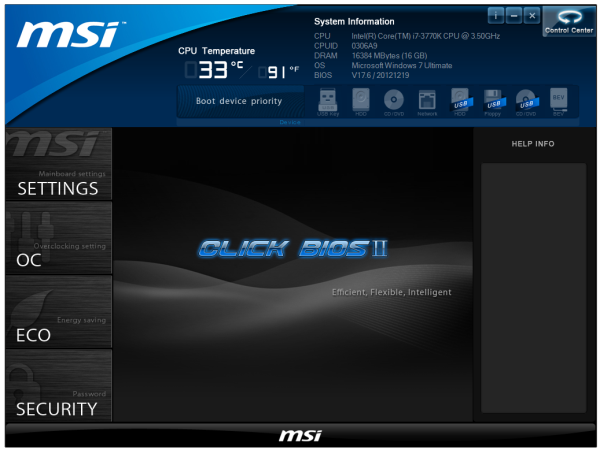
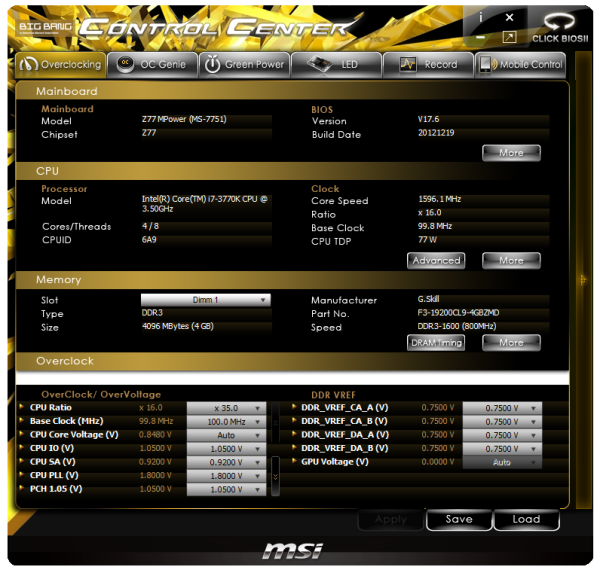
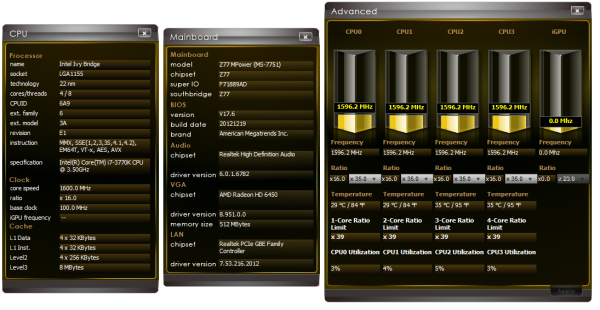
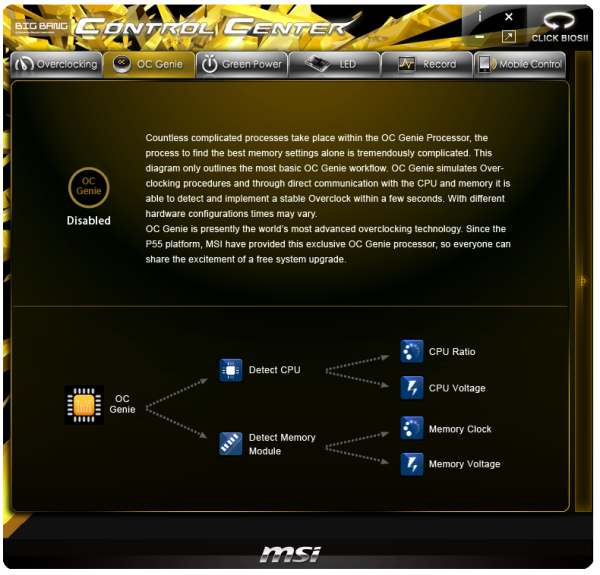
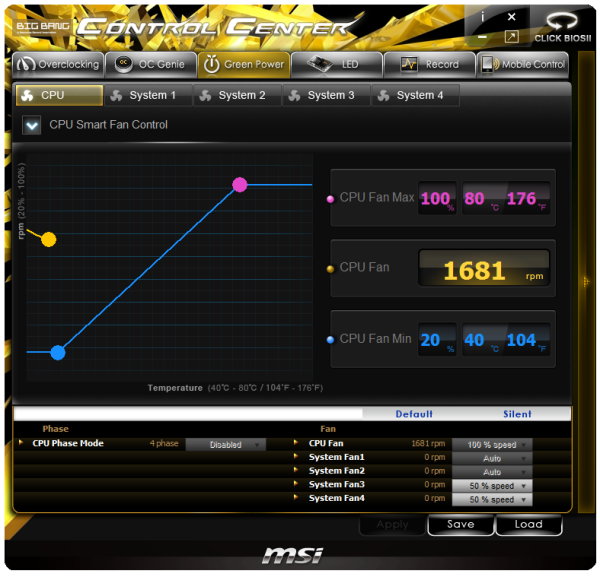
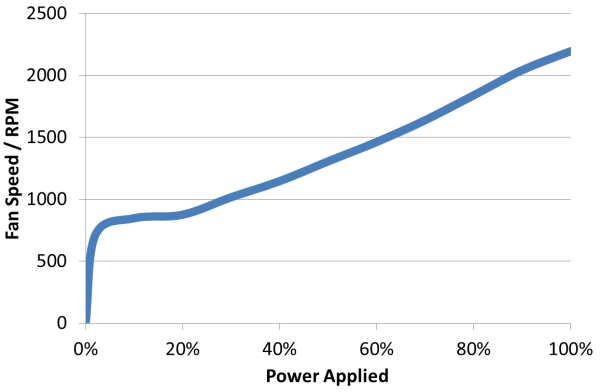
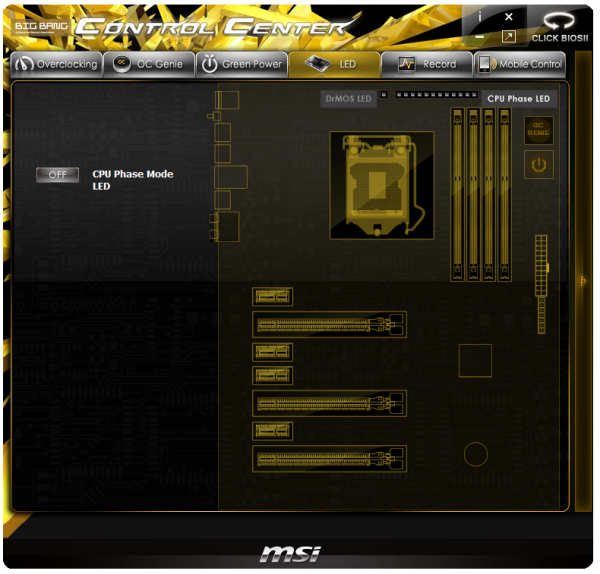
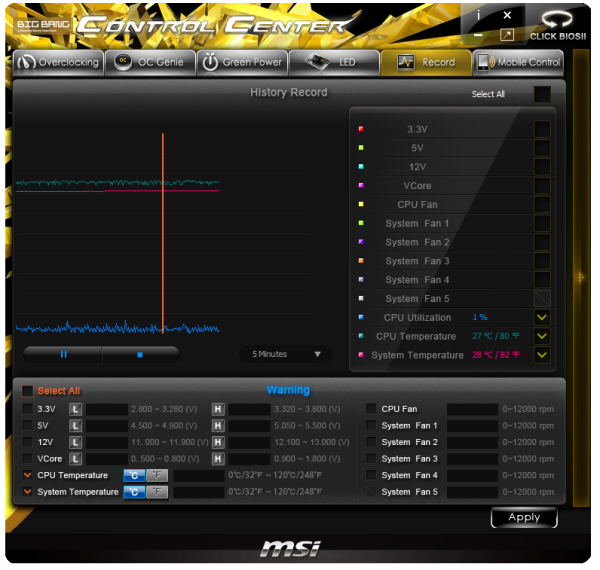
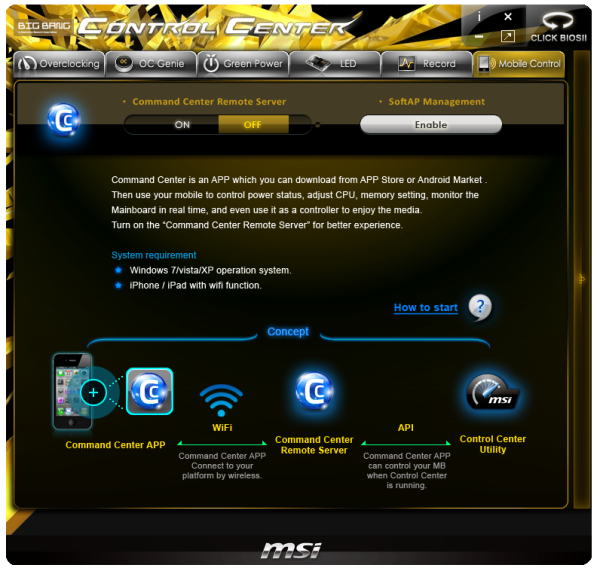
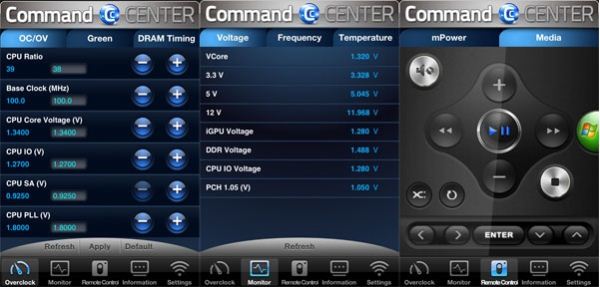
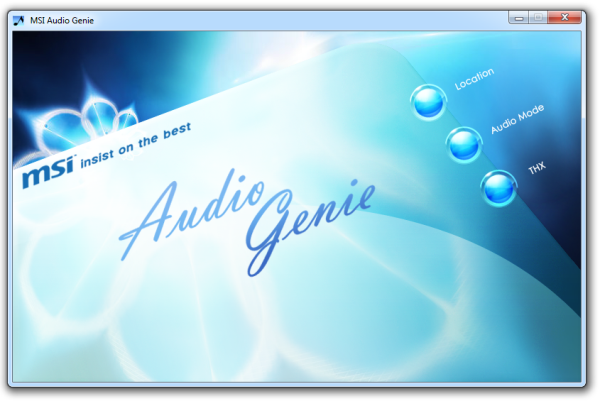

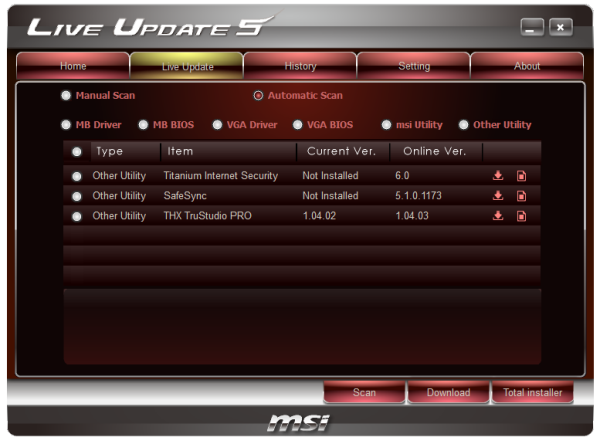
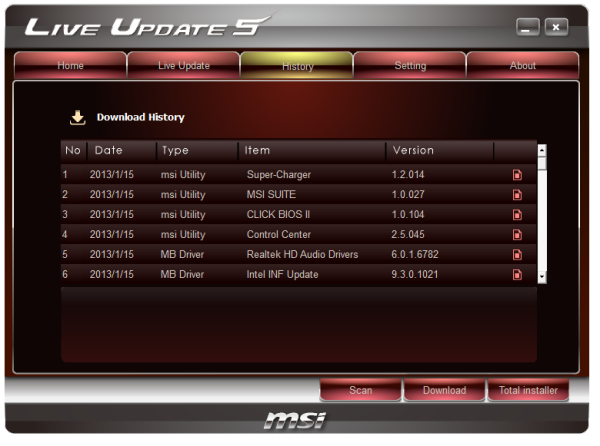
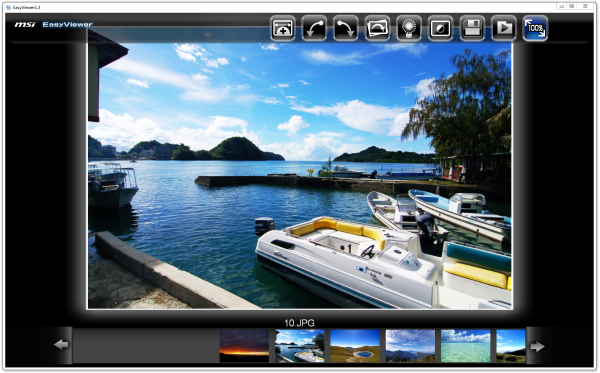
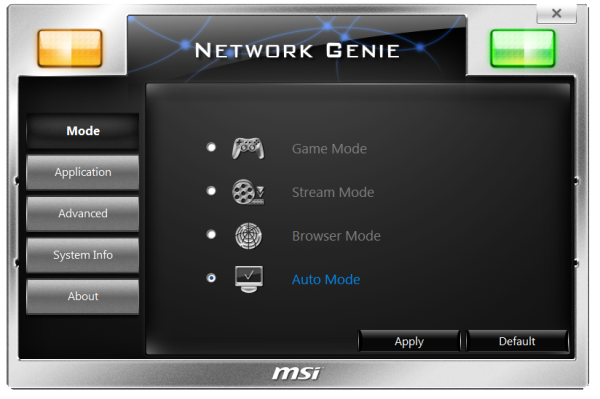















14 Comments
View All Comments
sherlockwing - Saturday, January 26, 2013 - link
I really love the 90 degree USB3.0 port on this board, it makes hiding the large and bulky 3.0 connector so much easier.This was one of board I considered before I bought my UP5-TH. Unforunately this board like most MSI boards use analog VRMs and MSI Bios don't allow Offset Overclocking so I went with the UP5-TH instead.
Blibbax - Saturday, January 26, 2013 - link
What exactly does this board need to be a top-notch overclocking board?IanCutress - Saturday, January 26, 2013 - link
A revised BIOS layout for options, a fully working software package that allows overclocking without issues in the OS (for digital power delivery options as well), and a series of automatic overclocking options for users that are unsure about overclocking but want more than the 4.2 GHz that OC Genie provides. There are a couple of boards in the $240-$280 range that adjust the VRM heatsinks to allow water cooling as well. Extreme overclockers would perhaps enjoy switches to disable PCIe slots, a wider variety of temperature probes on board, onboard on-the-fly adjustment buttons and a super level of BIOS options for skew, slew et al.Ian
NitroWare - Saturday, January 26, 2013 - link
The Intel ME is no longer solely ganged to the primary firmware and has not been for a while.Intel's package allows the ME to be invidually flashed or recovered using a number of bundled tools from DOS or Windows . Grab the ME pack either from the board OEM,Intel or station-drivers if you want to use the bleeding edge build#
If you are lazy, you can use asus's updater as it has been QA'd for end users IntelME81_Updating_Tool_V10001.zip from any ASUS Z77 download page, which is just Intel's flash tool and binary bundled with a custom ASUS front end which doesnt really work too well especially if you need to downgrade or reflash - they forgot the decision trees in the front end, but Intel's tool works well.
This will either contain a installshield or loose files
The Intel tools you are looking for are in neatly organised folders. MEtool.exe and FWUpdLcl64.exe, found in a variety of packages especially the ASUS package
both have context senstive help to dump version#s, recover, or force/flash the ME.
There are 2 sizes of ME for v8, 1.5MB and 5MB. Consumer Z77 use 1.5MB, I dunno what the 5MB one is for, maybe vPro systems
I cannot see any OEM custom builds as the binary comes from Intel, but each OEM releases a slightly older or newer buld depending on random reasons. I have used bleeding edge builds on various mobos without issue but that is something for personal preference.
I honestly can' remeber if you can flash v7 to v8 as it has beren a while since I have however last year for releaser of Ivy Bridge, Cougar Point (7 series) and Win8 some mobo vendors such as ASrock did a complete overhaul of their UEFI BIOS and updated all of the modules to the latest standard.
Z77 boards should have come with v8 or v8.1 ME anyway, I can't see why theyd ship a v7.
ASUS provided a end-user recommended update to 8.1 to 'enhance windows 8' as above.
Intel Desktop Boards support 8.1 also.
One wonders why they dont take this approach with the RAID OROM, as its just a BIOS module anyway.
NitroWare - Saturday, January 26, 2013 - link
I forgot to add that some third party vendors such as NEC-Renesas and ASmedia make it painful to flash the firmware for their products. ASmedia needs a DOS boot disk afaik.Some other vendors make it dead easy.
Why do you feel a one touch OC key is needed? Do you not think this is a gimic? It may be handy for bench testing but everything should be point and click or at least front bay controlled once the system is built up.
Sabresiberian - Saturday, January 26, 2013 - link
One of my "pet peeves" with mainboards is that the socket layout is terrible on pretty much all of them - regardless of size of board. They don't even take advantage of having more room in an E-ATX, XL-ATX, or what have you.This board has one of the best layouts I's seen in the sense that I could actually install 2 PCIe-1 devices even after installing 3 graphics cards! Unfortunately, that would make the graphics cards run on 8x-4x-4x and isn't enough for me, but still, it is a tempting board just for the socket layout. Most boards won't even allow for 1 PCIe-1 device if you have 3 graphics cards installed. It's ridiculous, in my opinion.
I love the color, too. Nice thing about black - it pretty much goes with anything, so even if my memory and graphics cards didn't match in color scheme, the mainboard wouldn't really add to a color confusion explosion. The yellow areas are small enough that they won't have much of an impact (I think).
I have built more computers based on MSI mainboards (hence my exposure to and acceptance of a term I like better, "mainboard" :) ) than any other brand, and they've always been reliable. I tend to prefer Asus these days for high end, but would always consider an MSI offering.
mayankleoboy1 - Sunday, January 27, 2013 - link
With someVRM moving to the CPU in Haswell, i expect the mobo to get a cleaner layout. Or that the space could be used for cramming some additional stuff. Not sure which i would prefer....cjb110 - Sunday, January 27, 2013 - link
You mention that there's no help on-screen, but are the BIOS settings detailed in the manual though?As I'd say that's acceptable, maybe not for the target market (that would more likely be changing settings regularly), but for a general user a once-off trip to the BIOS with the manual next to you would be fine.
peterwhitehouse - Sunday, January 27, 2013 - link
Surely this is not true for Windows 8 as that has native USB 3.0 support?Perhaps if we ever see a Windows 7 SP2 that may possibly support USB 3.0 natively as well.
peterwhitehouse - Monday, January 28, 2013 - link
I have checked this today and Windows 8 does indeed support USB 3.0 ports during install as suspected so I guess we can cross off having lots of USB 3.0 ports on the rear as being a possible downside.